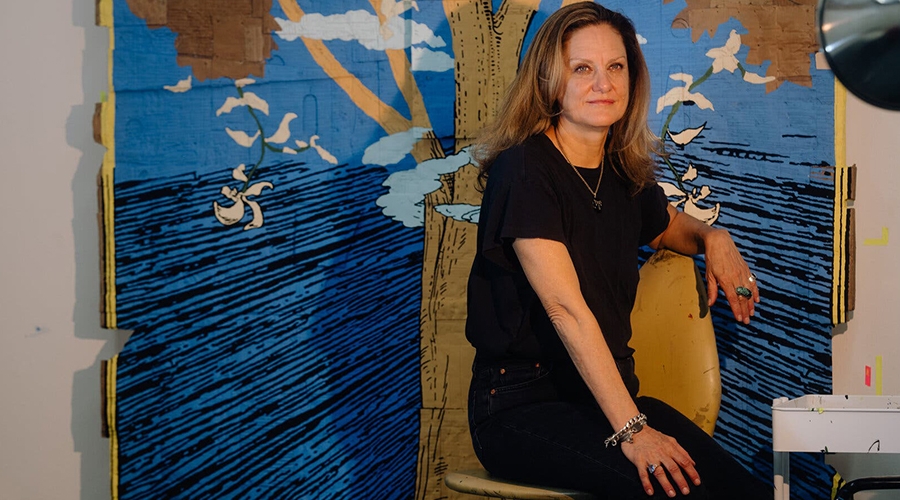
The text below is excerpted from “Andrea Bowers: Her Activism Animates Her Art” By Siddhartha Mitter, which was published by The New York Times on November 30, 2021.
LOS ANGELES — The artist Andrea Bowers is a workaholic who, during the depths of the pandemic, was happy to bunker in her studio here and spend hundreds of hours making a single photorealistic drawing of, say, a protester for fair wages or climate justice.
But Bowers, 56, whose art and politics are fully merged, is never more fulfilled than on the frontlines. And so she also ventured out: Joining the protests after the murder of George Floyd. Driving up the coast to embed with queer tree-sitters half her age defending redwood groves from clear-cutting in Mendocino County. To San Francisco, where she is creating an installation for the new Harvey Milk airport terminal, with disco balls and quotes in neon from the civic leader murdered in 1978.
“I’m literally making work about activism and activists,” she told me during a recent visit to her Highland Park studio. “I just offer my services, if they’re useful, and see if they’re OK with me also making some art.”
For a quarter-century, through the ever-changing social and cultural climate, Bowers has forged lasting bonds with queer and trans folk, fighters for abortion rights, radical environmentalists, immigration advocates, Native activists and scholars across generations.
“She creates her work to represent the lucha, the struggle of the people,” said the Chicago pastor and activist Emma Lozano. “From worker’s rights to immigrant rights to sanctuary, she’s been on top of it, and supporting it, making sure we get recognized through the art.”
And if her art is useful, it’s also museum-grade, shaped by the rigor of her training at the California Institute of the Arts in the early ’90s, and by intellectual engagement with second-wave feminism.
“She approaches the question of what is art’s role in addressing political and cultural issues as a distinct practice,” said the conceptual artist Charles Gaines, her friend and former teacher at CalArts.
Of her ability to make work that excels both aesthetically, by the standards of art theory, and literally as political material, he said, “I don’t know anybody who has done that as effectively.”
Now, a career-spanning survey has opened at the Museum of Contemporary Art Chicago, organized by Michael Darling, the MCA’s former chief curator, and Connie Butler, chief curator at the Hammer Museum, where it will travel in 2022. The largest-ever presentation of Bowers’s work, it offers perspective on a remarkable journey.
Read the full New York Times article (subscription might be required).
Main image: Photograph by Rozette Rago for The New York Times


